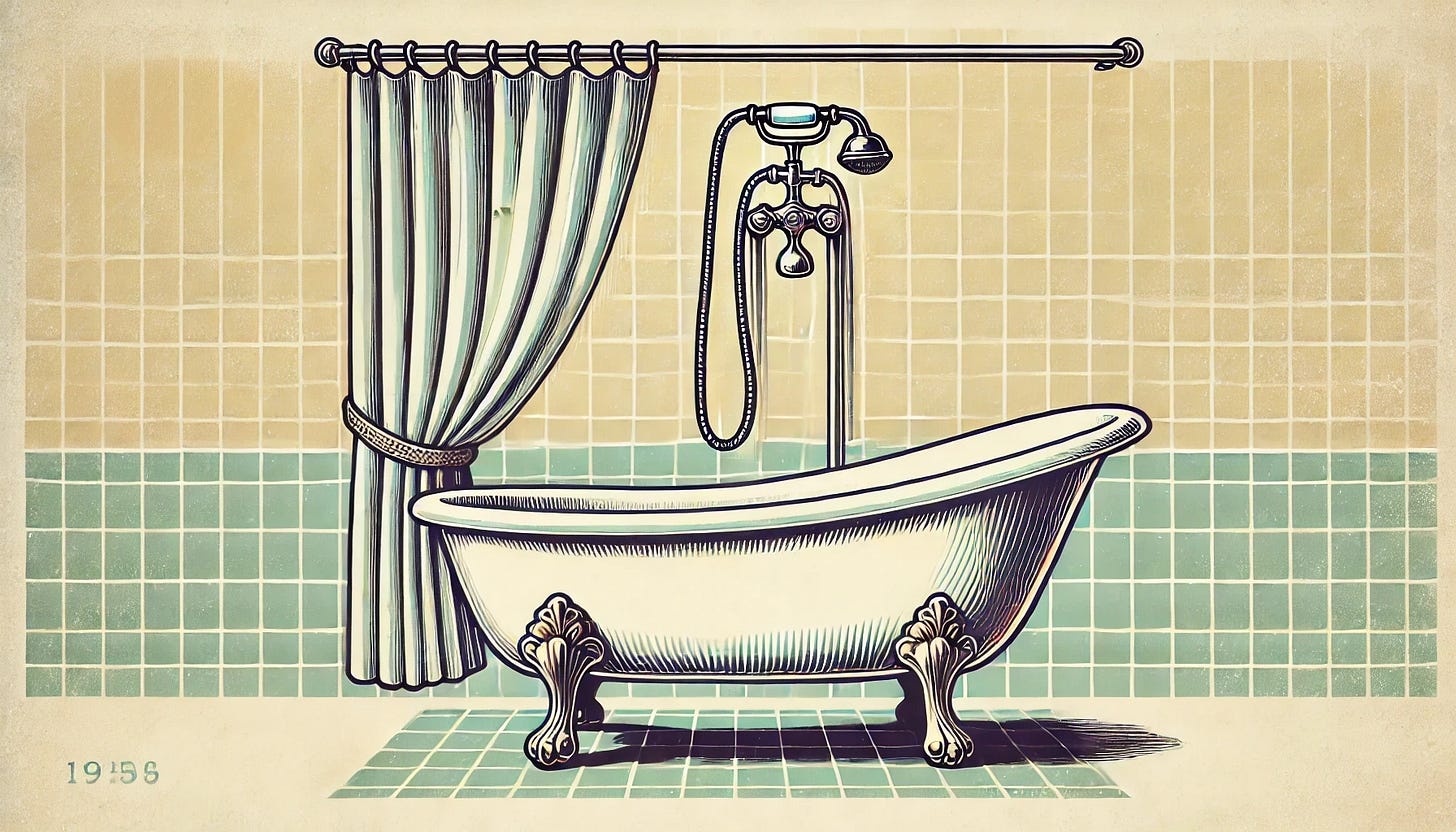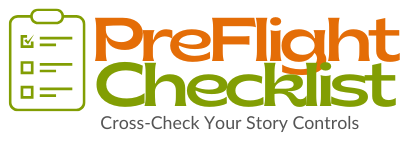If All Else Fails, Take a Shower.
Overcoming Creative Blocks When You're Feeling Stuck
Hey, friend!
I don’t know about you, but as we enter this new week, I’ve got nothin’.
Zero.
Zilch.
The tank is empty — at least when it comes to doing anything that requires more than just survivor-level thinking. (And I’m not talking about the television show.)
Why? I don’t really know.
But I have an idea:
These days — which are too often characterized by some very, very dark news here in the U.S. — there’s a whole extra layer of stress that many of us are hauling around. Some days, it feels like trying to climb Mt. Everest without enough oxygen in the tank.

Regardless of where it comes from, stress is a serial killer when it comes to creativity.
But, here’s the thing: Even when I don’t “feel” creative, I still have to get up each day, put my butt in the chair, and make shit happen.
And so do you.
How do we unstick our stuckness?
Dr. Scott Barry Kaufman, a professor of psychology at Columbia University, speaker and best-selling author, conducted a study about creativity and found the following:
72% of people get new ideas while in the shower — and 14% of people take a shower specifically to spark their creativity.
Source: PMMag.com
I can relate to this. My guess is that you can, too.
But jumping in the shower for creative inspiration isn’t always doable.
So, we need other tools to get over, under or around creative blocks.
And this is where story prompts come in.
Let’s head over to the Flight School where five SUPER useful prompts are waiting for you!
The Power of Story Prompts
For those of us who are 40+ (with some of us being MUCH more “+” than “40”), we have a HUGE treasure trove of experiences and insights we’ve accumulated over the years.
In other words, we have a lot of fodder for creating content that will connect us with our audiences in meaningful and valuable ways.
But, when our creative wheels have come to a screeching halt, it feels like the door to our treasure trove of experiences has slammed shut and we can’t find the key to open it.
This is where strategic story prompts come in.
These prompts work because they bypass the overwhelming question of "what should I talk about?" and instead create a specific path for your brain to follow.
Here are five that I find SUPER helpful when I’m feeling like I do this week:
1. The Obstacle Prompt
"What was the biggest challenge I faced in my business last month, and what did I learn from it?"
Why it works: This prompt creates vulnerability-based content that showcases your problem-solving abilities and resilience.
Your audience doesn't just want your highlight reel of successes. That’s boring. Instead, they want to see how you overcome challenges when things go sideways.
People connect with resilience, not just success. Sharing challenges builds trust and authority.
Example starter: "Last month, I faced a challenge that initially felt overwhelming. Here’s what happened: ..."
2. The Client Transformation Prompt
"What's one small but meaningful change I've recently helped a client achieve?"
Why it works: Not every client story needs to be a dramatic breakthrough. Often, it's the subtle shifts that demonstrate your expertise most authentically.
This prompt helps you create mini case studies without requiring formal documentation or massive results. It shows the human impact of your work.
Example starter: "I recently worked with a client who had been struggling with... After implementing one simple change in her approach..."
3. The Values-in-Action Prompt
"When did I recently make a business decision based purely on my core values rather than profit?"
Why it works: This prompt generates content that differentiates your brand in a marketplace that often prioritizes revenue over relationships.
These stories attract clients who share your values and appreciate your integrity. They're also typically emotional-driven stories, which makes them more relatable and memorable.
Example starter: "I was recently presented with an opportunity that looked great on paper, but something about it just didn’t feel right to me.”
4. The Mentorship Prompt
"What's something significant I've learned from someone else in the past 30 days?"
Why it works: This creates connection content and positions you as a continuous learner – someone who has expertise but remains curious. These stories can bridge generational gaps, showing that while you bring decades of experience to the table, you're a life-long learner and open to new perspectives.
Example starter: "I was having coffee with a young friend of mine earlier this week and the conversation we had completely shifted my thinking about..."
5. The Evolution Prompt
"How has my approach to _____ changed since I started my business?"
Why it works: This creates wisdom-based content that leverages your journey and experience. These before/after stories showcase your growth mindset and give your audience permission to evolve their thinking, too. They position you as someone who's been in business long enough to see trends come and go.
Example starter: "When I first started my business, I believed that success meant... Now, after years of experience, I've come to understand that..."
Maximizing Your Prompted Content
Now that you have these five prompts, let's look at how to put them to work in your content creation process.
1. Schedule Prompt Time
Block 20-30 minutes on your calendar each week specifically for working with these prompts. Treat this as non-negotiable "content fuel" time.
2. Create a Distraction-Free Zone
When working with prompts, eliminate distractions. Close extra tabs, silence notifications, and create space for your wisdom to emerge. Sometimes the best content comes from the quietest moments.
3. Write Without Editing First
Give yourself permission to write a "messy first draft" in response to the prompt. Don't edit as you go. (For all of my perfectionist friends out there, I know this is a HUGE ask. But just give it a try.)
4. Connect to Your Audience's Needs
After drafting your response, ask yourself: "What problem does this help my audience solve?" This transforms personal anecdotes into valuable content.
5. Add a Clear Takeaway
Ensure your content includes a specific lesson or action item. What should your audience do differently after consuming this content?
6. Store Your Ideas for a Rainy Day
Create a simple system for storing your prompted content pieces. A Google Doc with dates and prompt categories works well, making it easy to find content when you need it.
For busy entrepreneurs, using story prompts isn’t just about creating content, Nope. Instead, they can and should be used to strategically capture your wisdom in bite-sized pieces that can be expanded when needed.
This approach creates a sustainable content practice that relies on your experiences rather than a constant flow of new ideas.
Using AI to Expand Your Content with Authentic Stories
Once your responses to any of these story prompts are flowing, AI can help you turn them into fully formed content. Here’s how to go from an idea to a polished piece with AI’s help:
1. Expand Your Idea Into a Full Piece of Content
Take your initial response to any of the prompts and ask AI to help flesh it out into a more complete, structured narrative.
📌 Try this prompt:
“I want to turn this story idea into a full piece of content with context, personal examples, and a clear takeaway. Here’s my starting point: [YOUR CONTENT STARTER]”
💡 Pro tip: If you have a word count goal, let AI know! Example: “Please expand this into a 500-word LinkedIn post.”
2. Adapt Content for Different Platforms
Once you have a strong draft, AI can help you tailor it for different audiences.
📌 Try this prompt:
“I have a story I want to share across multiple platforms. Please help me adapt it for:
1. A LinkedIn post (professional, thoughtful)
2. An Instagram caption (shorter, more conversational, with hashtag suggestions)
3. A newsletter section (more personal, with a clear call to action).”
Here’s my content: [YOUR CONTENT]
💡 Pro tip: AI can also help shorten or expand content. Try: “Make this post more concise while keeping the key message intact.”
3. Generate Audience Engagement Questions
Encourage conversation by asking AI for thought-provoking questions related to your content.
📌 Try this prompt:
“Based on this content, suggest three engaging questions I could ask my audience to spark discussion or encourage them to share their own experiences.”
💡 Pro tip: If you’re posting on LinkedIn or Instagram, ask AI for questions that specifically encourage comments.
4. Brainstorm Visual Ideas
A great image or graphic can make your story more compelling. AI can help you brainstorm visual elements to pair with your content.
📌 Try this prompt:
“What are some visual ideas that would complement this content? Please suggest images, graphics, or themes that would enhance engagement.”
Here’s my content: [YOUR CONTENT]
💡 Pro tip: If you use Canva or other design tools, ask AI for text-based graphic ideas, such as quote cards or carousel post themes.
As always, remember that AI is your content creation co-pilot. But you’re the pilot.
AI is here to help with structure, brainstorming, and repurposing—but your voice and experiences are what make your content stand out. Use these AI prompts to refine and enhance your stories while keeping them uniquely yours.
Looking Ahead: Building Your Content Bank
Consider setting aside 15 minutes each week to respond to one of these five prompts and gradually build a "content bank" you can draw from when time is tight or inspiration is low. These experience-based content starters can become the seeds for:
Newsletter content
Social media posts
Speaking engagement anecdotes
Sales call examples
Website testimonials and case studies
Some of your most authentic, relatable content will come from moments when you feel stuck.
Remember: Sharing your authentic experiences is the ultimate shorter runway. It’s how you create faster, more meaningful connections with your audience.
The best stories don’t come from moments of perfection. Instead, they come from real, lived, imperfect experiences. And often, the best ideas emerge when we’re not actively searching for them. Inspiration has a funny way of showing up when we least expect it (even in the shower).
Here for every twist and turn of your story,
Michele
Know someone who might enjoy this issue of The Shorter Runway? Please share it with them! Just click on the “share” button below:
Let’s make this a conversation instead of a monologue! I want to hear your thoughts about — well — pretty much anything! So, click to comment!







Oh, I feel this. Some weeks, creativity flows like a waterfall and other weeks, it’s more like squeezing the last bit of toothpaste from the tube.
And showers are the secret weapon lol
Some of my best ideas happen when I’m mid-shampoo. The gym is another place where I think about creative stuff. Too bad they don’t always survive the journey to a notebook.
Happy Monday Michele ....
I used to joke that if I were a man I'd take a couple of showers a day, lol (my hair is too much of a production to do that).
I definitely get ideas in the shower, but lately, I've found that my ideas flow most when I'm not in the weeds of my niche.
Love the prompts! Going to try those out this week, thanks!